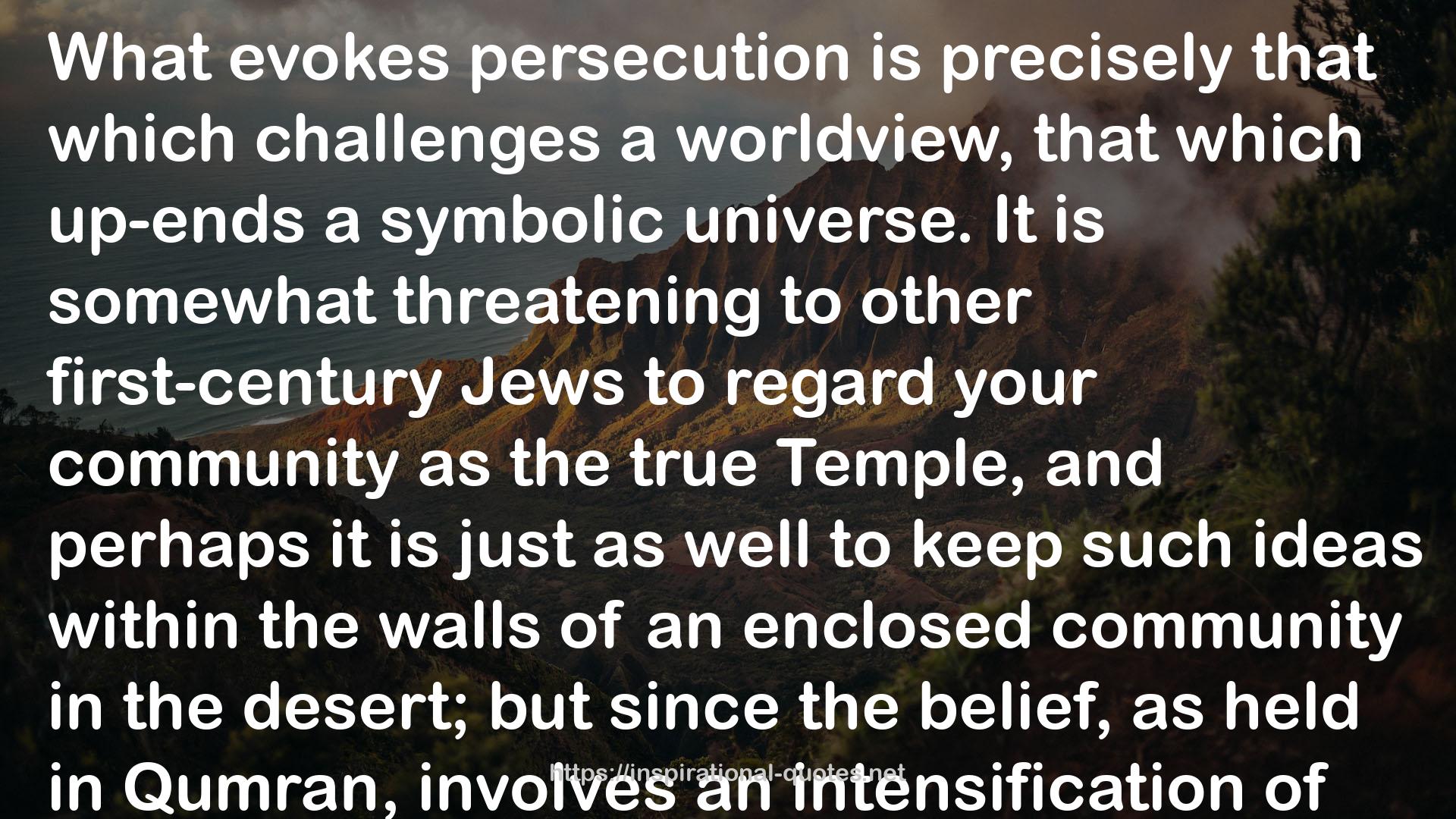" What evokes persecution is precisely that which challenges a worldview, that which up-ends a symbolic universe. It is somewhat threatening to other first-century Jews to regard your community as the true Temple, and perhaps it is just as well to keep such ideas within the walls of an enclosed community in the desert; but since the belief, as held in Qumran, involves an intensification of Torah, the vicarious purification of the Land, the fierce defence of the race, and the dream of an eventually rebuilt and purified physical Temple in Jerusalem itself, one can imagine Pharisees debating it vigorously but not seeking authority from the chief priests to exterminate it. It embodied, after all, too many of the central worldview-features. The equivalent belief as held within Christianity seems to have had no such redeeming features. No new Temple would replace Herod’s, since the real and final replacement was Jesus and his people. No intensified Torah would define this community, since its sole definition was its Jesus-belief.28 No Land claimed its allegiance, and no Holy City could function for it as Jerusalem did for mainline Jews; Land had now been transposed into World, and the Holy City was the new Jerusalem, which, as some Jewish apocalyptic writers had envisaged, would appear, like the horses and chariots of fire around Elisha, becoming true on earth as it was in heaven.29 Racial identity was irrelevant; the story of this new community was traced back to Adam, not just to Abraham, and a memory was preserved of Jesus’ forerunner declaring that Israel’s god could raise up children for Abraham from the very stones.30 Once we understand how worldviews function, we can see that the Jewish neighbours of early Christians must have regarded them, not as a lover of Monet regards a lover of Picasso, but as a lover of painting regards one who deliberately sets fire to art galleries—and who claims to do so in the service of Art.31 "
― N.T. Wright , The New Testament and the People of God (Christian Origins and the Question of God, #1)
